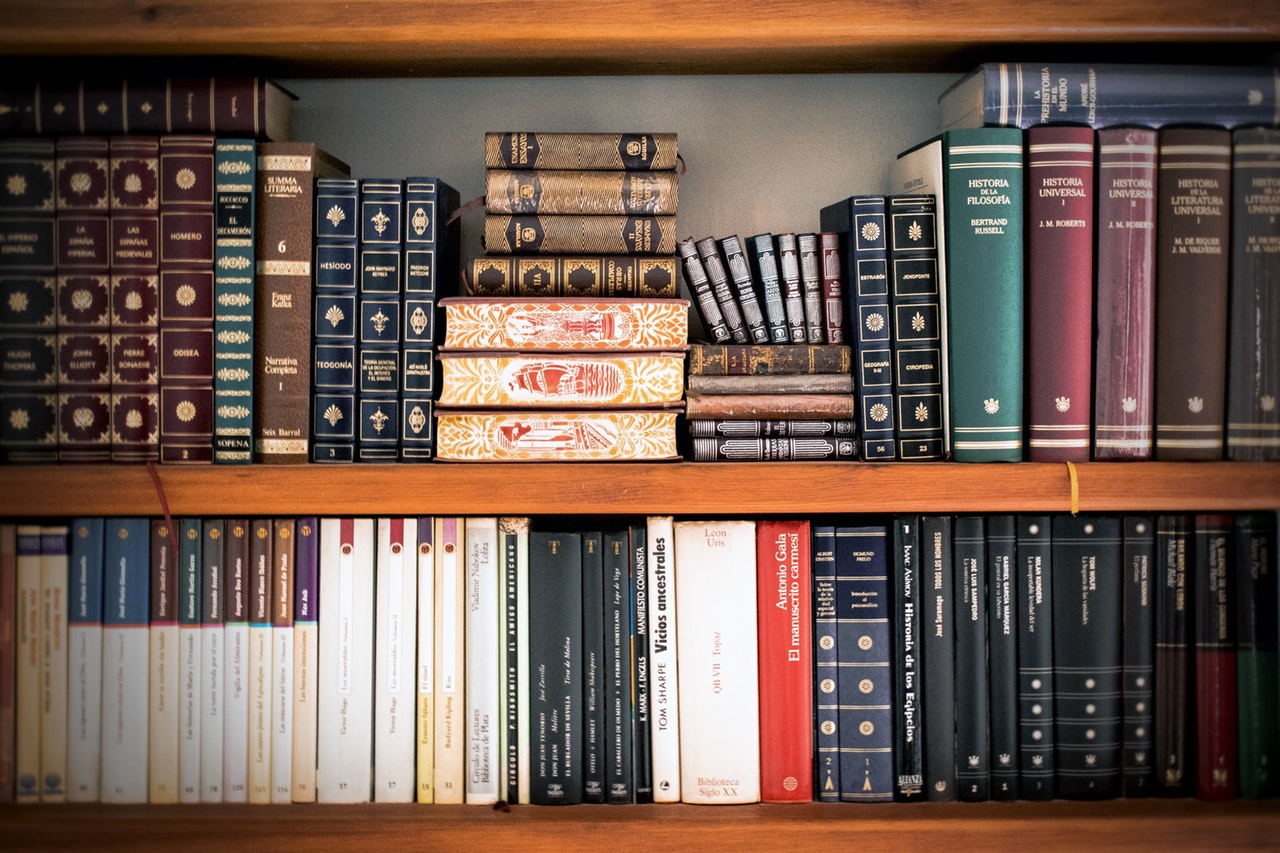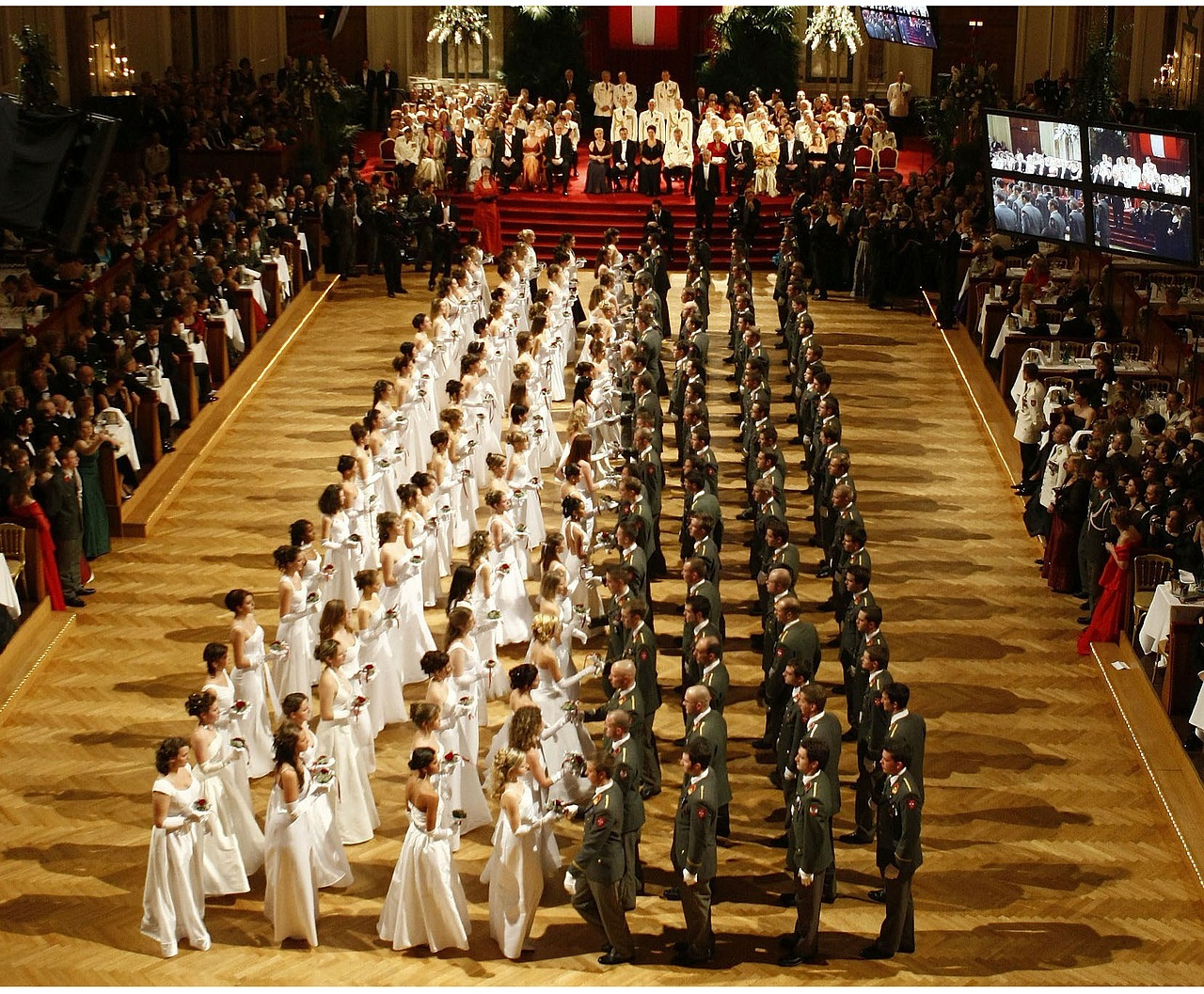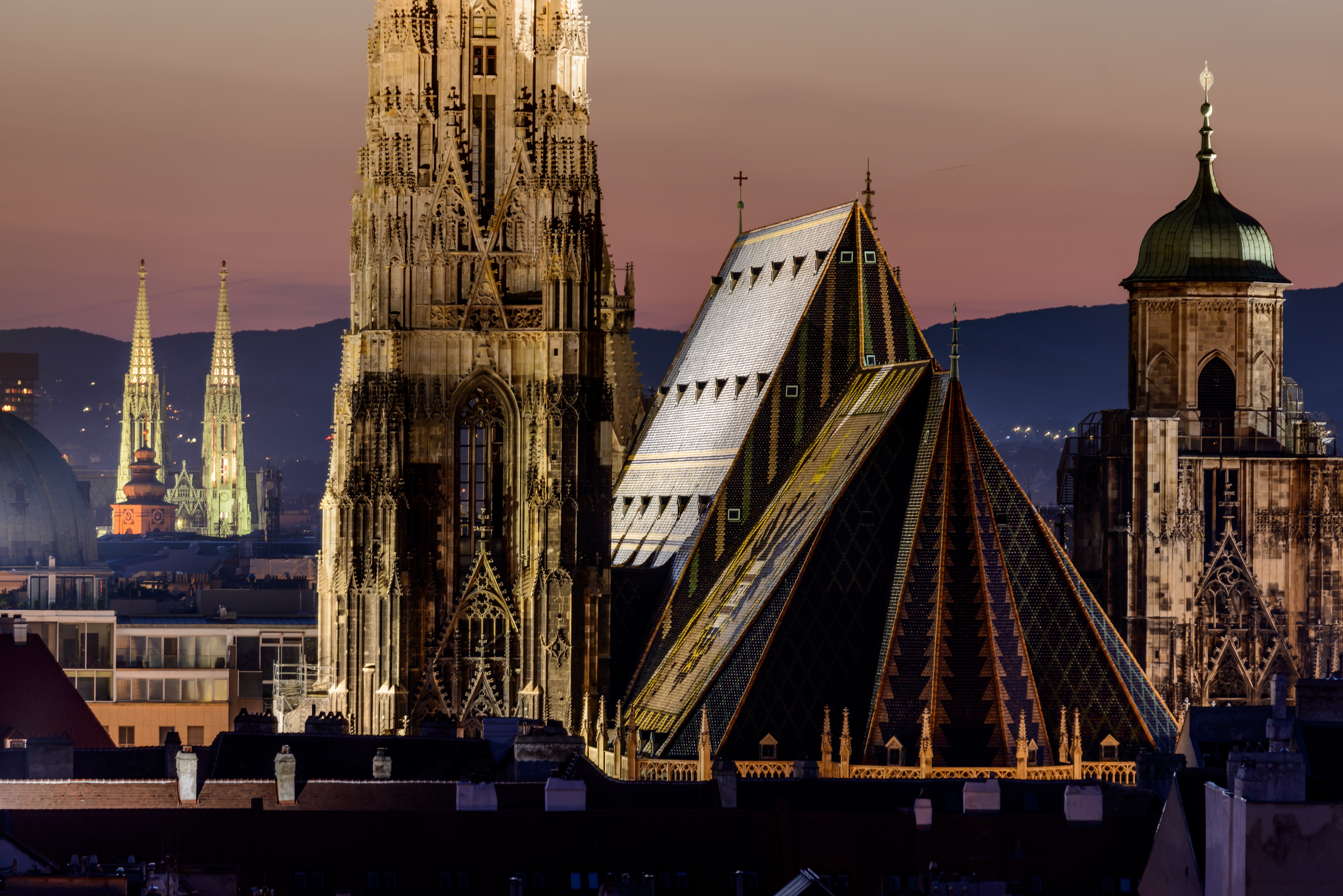Whether you plan on staying in Vienna for just a few short days, or you will start living here long-term, you might want to get to know the city and its history beforehand.
Some of the following books are more specialised, others cover about anything, but all of them give you interesting and valuable insights into this marvellous city.
Rick Steves’ Pocket Vienna
This book helps you to make the most of every day if your are spending a week or less in Vienna.
It offers you seven detailed, self-guided walks and city tours that zero in on Vienna’s greatest sights and neighbourhoods. Day-by-day itineraries help you make the most of your time in the city and a detailed, detachable fold-out map (as well as the helpful museum and city maps scattered throughout the book) makes sure you always end up exactly where you want to be.
The rest of the book is a classic traveler’s guide. It gives you information about anything from where to eat, basic German phrases, helpful hints about what’s worth your time and money and how to save time and Euros.
DK Eyewitness Travel Guide Vienna
This guide is the ideal travel companion, full of insider advice on what to see and do, plus detailed itineraries and comprehensive maps for exploring this impressive imperial city.
Explore the beautiful Schönbrunn Palace and Gardens, watch the elegant horses at the Spanish Riding School, or marvel at Gustav Klimt masterpieces at the Belvedere: everything you need to know is clearly laid out within color-coded chapters. Discover the best of Vienna with this indispensable travel guide.
The book comes with 20 color maps, plus a Vienna subway guide, that help you navigate the city streets with ease. It has comprehensive tours and itineraries of Vienna that make sure you will find a match for any interest and budget and that make planning your trip super easy.
The extensive travel guide also includes valuable information about where to stay, where to eat, the language, the people, as well as all the details about visa and insurance you might need.
Secret Vienna (Local Guides by Local People)
A magnificent private palace that can be visited by reservation, a crocodile mummy in a private library, a chocolate house, an alchemical ceiling in Schönbrunn, one of the most beautiful pharmacies in the world, an exceptional Art Nouveau church , the tomb of a fish that would have converted to Judaism, a jazz museum in public toilets, a public dump that can be visited like a museum, the oldest organ in Vienna hidden behind a painting, an empress dressed as a nun, the mystery of the symbol 05, a masculine sex discreetly sculpted on the cathedral of Vienna, a surprising private museum of billiards, an incredible bouquet where each flower actually consists of several butterfly wings, a source of water that allows to see the lotto figures for a minute, an extraordinary underground annex of the Mauthausen camp where the world’s first jet was built, a «love hôtel» historic of great charm…
Discover all of that and more in this charming guide.
Secret Vienna Stories: Legends, facts and locations for the true explorer
There are many ways to make the most out of an opportunity that you are given. You can surf or you can go deeper. You can just do as the vast majority of people do or you can go on a secret journey and discover the mystery around you.
It is everywhere: in food, all over the buildings, hidden in plain sight under your nose. Do you prefer to keep ignoring it or are your itching for more? There is no need to be an Opera buff or an expert in Jugend Stil. You just need an open mind and the desire to learn. If this is the case, you have come to the right place.
Welcome to Secret Vienna where you can learn in short stories how history and legend blend in one and make sense of small, apparently insignificant, elements that when connected, can paint a magnificent fresco of the last 2,000 years in one of the most magnificent capitals of Europe.
Vienna – A Doctor’s Guide: 15 Walking Tours Through Vienna’s Medical History
“The streets of Vienna are paved with history of medicine,” the famous Viennese writer and journalist Karl Kraus could have said. In fact, an attentive visitor can’t move through the city without being reminded by all the street names, historical buildings, monuments or memorial stones that Vienna has been a capital of medicine where students and doctors from all over the world came to learn.
This city guide is meant for all the visitors of this fascinating city, who are interested in the history of medicine. 15 walks through the city show the reader the traces of the old medical Vienna: the Fools Tower, Freud’s private practice and apartment, the workplaces of many famous physicians, the Old General Hospital, the old university, or the most important pathological museums.
Many unknown details and anecdotes are included as well as a short history of Vienna and some gourmet tips and the famous Viennese coffee shops for relaxing.
Vienna: A Cultural History
From border garrison of the Roman Empire to magnificent Baroque seat of the Habsburgs, Vienna’s fortunes swung between survival and expansion. By the late nineteenth century it had become the western capital of the sprawling Austro-Hungarian Monarchy, but the twentieth century saw it degraded to a “hydrocephalus” cut off from its former economic hinterland. After the inglorious Nazi interlude, Vienna began the long climb back to the prosperous and cultivated city of 1.7 million inhabitants that it is today. Subjected to constant infusions of new, Vienna has both assimilated and resisted cultural influences from outside, creating its own sui generis culture.
Only in Vienna: A Guide to Unique Locations, Hidden Corners and Unusual Objects
Only In Vienna is a comprehensive, illustrated guide to more than 80 fascinating and unusual historical sites in one of Europe’s great capital cities. Including hidden courtyards, mysterious cellars, little-known museums and forgotten cemeteries, the guide covers from the Romans and Napoleon to Hitler and the Habsburgs.
Recommended for visitors to Vienna wishing to discover something a little different, as well as for those inhabitants who perhaps thought they already knew the city.
The guide takes you to sites such as: The Holy Lance, Fool’s Tower, Klimt’s Last Studio, The Secret of Dreams, James Bond Scenes, Montezuma, Harry Lime and the Tattooed Lady.
Fin-De-Siecle Vienna: Politics and Culture
A landmark book from one of the truly original scholars of our time: a magnificent revelation of turn-of-the-century Vienna where out of a crisis of political and social disintegration so much of modern art and thought was born.
“Not only is it a splendid exploration of several aspects of early modernism in their political context; it is an indicator of how the discipline of intellectual history is currently practiced by its most able and ambitious craftsmen. It is also a moving vindication of historical study itself, in the face of modernism’s defiant suggestion that history is obsolete.”
(David A. Hollinger, History Book Club Review)
“Each of [the seven separate studies] can be read separately… Yet they are so artfully designed and integrated that one who reads them in order is impressed by the book’s wholeness and the momentum of its argument.”
(Gordon A. Craig, The New Republic)
Vienna: Art & Architecture
At the mention of Vienna, many visitors think of Sachertorte, romantic open carriage trips and an evening in one of local wine taverns. But the old imperial city has much more to offer.
This book presents a comprehensive, richly illustrated view of the art treasures to be found in the Danube metropolis. The main focus is on the baroque era with its magnificent church buildings and palaces including the Hofburg, Schönbrunn and Belvedere; historicism with its architectural highlights on the new Ringstrasse; and Viennese art nouveau including artists Gustav Klimt and Oskar Kokoschka, the Wiener Werkstätte und Sezession.
Well-founded essays on the beginnings of the history of art in Vienna and on the state of contemporary Viennese art round off the book.
Art in Vienna 1898 – 1918: Klimt, Kokoschka, Schiele and Their Contemporaries
The artistic stagnation of Vienna at the end of the 19th century was rudely shaken by the artists of the Vienna Secession. Their work shocked a conservative public, but their successive exhibitions, their magazine Ver Sacrum, and their application to the applied arts and architecture soon brought them an enthusiastic following and wealthy patronage. The book brilliantly traces the course of this development. Klimt, Kokoschka and Schiele were the leading figures in the fine arts; Wagner, Olbrich, Loos and Hoffmann in architecture and the applied arts. In other fields, Mahler, Freud and Schnitzler were influencing the avant‐garde.
The book includes eye‐witness accounts of exhibitions, the opening of the Secession building and other events, and the result is a fascinating documentary study of the members of an artistic movement which is much admired today. Some 150 color images and 75 black and white archival illustrations make this a sumptuous and historically engrossing study of a period when Vienna was the centre of the European art world.
City of Women: Female Artists in Vienna from 1900 to 1938
Although overshadowed by their male colleagues, many important women artists carved out successful careers in early 20th-century Vienna. They exhibited across Europe and their work was acquired by royal, state, and private collectors. Their names, however, are largely unknown today and their masterpieces relegated to footnotes in history.
Artists such as Elena Luksch-Makowsky, Helene Funke, Erika Giovanna Klien, Ilse Bernheimer, Maria Cyrenius, Friedl Dicker, Marie Egner, and Louise Fraenkel-Hahn are profiled in this book along with vibrant reproductions of their works. The remarkable stories of how many of these women found their way to Vienna from Germany, Russia, and beyond are enhanced by explorations of their contributions to such movements as Atmospheric Impressionism, Secessionism, Expressionism, Kineticism, and New Objectivity.
This book shows how the ingenuity and perseverance of these artists enabled them not only to carve out a place alongside their more renowned male peers, but also to create their own associations and exhibitions and become a pivotal part of the Viennese Modernism movement.
Vienna 1683: Christian Europe Repels the Ottomans (Campaign)
This book is the study of a battle that was part of a triple conflict: the Polish-Ottoman War (1683-1699), the Great Turkish War (1667-1698), and the Ottoman Habsburg Wars (1526-1791). The capture of the Habsburg city of Vienna was a major strategic aspiration for the Islamic Ottoman Empire, desperate for the control that the city exercised over the Danube and the overland trade routes between southern and northern Europe. In July 1683, Sultan Mehmet IV proclaimed a jihad and the Turkish grand vizier, Kara Mustafa Pasha, laid siege to the city with an army of 150.000 men.
In September a relieving force arrived under Polish command and joined up with the defenders to drive the Turks away. The main focus of this book is the final 15-hour battle for Vienna, which climaxed with a massive charge by three divisions of Polish winged hussars. This hard-won victory marked the beginning of the decline of the Islamic Ottoman Empire, which was never to threaten central Europe again.
Vienna, 1814: How the Conquerors of Napoleon Made Love, War, and Peace at the Congress of Vienna
This book is an evocative and brilliantly researched account of the most audacious and extravagant peace conference in modern European history. With the feared Napoleon Bonaparte presumably defeated and exiled to the small island of Elba, heads of some 216 states gathered in Vienna to begin piecing together the ruins of his toppled empire. Major questions loomed: What would be done with France? How were the newly liberated territories to be divided? What type of restitution would be offered to families of the deceased? But this unprecedented gathering of kings, dignitaries, and diplomatic leaders unfurled a seemingly endless stream of personal vendettas, long-simmering feuds, and romantic entanglements that threatened to undermine the crucial work at hand, even as their hard-fought policy decisions shaped the destiny of Europe and led to the longest sustained peace the continent would ever see.
Beyond the diplomatic wrangling, however, the Congress of Vienna served as a backdrop for the most spectacular Vanity Fair of its time. Highlighted by such celebrated figures as the elegant but incredibly vain Prince Metternich of Austria, the unflappable and devious Prince Talleyrand of France, and the volatile Tsar Alexander of Russia, as well as appearances by Ludwig van Beethoven and Emilia Bigottini, the sheer star power of the Vienna congress outshone nearly everything else in the public eye.
An early incarnation of the cult of celebrity, the congress devolved into a series of debauched parties that continually delayed the progress of peace, until word arrived that Napoleon had escaped, abruptly halting the revelry and shrouding the continent in panic once again.
The book beautifully illuminates the intricate social and political intrigue of this history-defining congress–a glorified party that seemingly valued frivolity over substance but nonetheless managed to drastically reconfigure Europe’s balance of power and usher in the modern age.
The Habsburg Empire: A New History
If you want to know why the Habsburg Empire mattered so much, for so long, to millions of Central Europeans, this book is for you.
Across divides of language, religion, region, and history, ordinary women and men felt a common attachment to their empire, while bureaucrats, soldiers, politicians, and academics devised inventive solutions to the challenges of governing Europe’s second largest state. In the decades before and after its dissolution, some observers belittled the Habsburg Empire as a dysfunctional patchwork of hostile ethnic groups and an anachronistic imperial relic. This book examines their motives and explains just how wrong these rearguard critics were.
Rejecting fragmented histories of nations in the making, this bold revision surveys the shared institutions that bridged difference and distance to bring stability and meaning to the far-flung empire. By supporting new schools, law courts, and railroads, along with scientific and artistic advances, the Habsburg monarchs sought to anchor their authority in the cultures and economies of Central Europe. A rising standard of living throughout the empire deepened the legitimacy of Habsburg rule, as citizens learned to use the empire’s administrative machinery to their local advantage. Nationalists developed distinctive ideas about cultural difference in the context of imperial institutions, yet all of them claimed the Habsburg state as their empire.
The empire’s creative solutions to governing its many lands and peoples as well as the intractable problems it could not solve left an enduring imprint on its successor states in Central Europe. Its lessons remain no less important today.
The Austrians: A Thousand-Year Odyssey
This is a masterful survey of Austria’s controversial place at the heart of European history. From the Reformation through the Napoleonic and Cold Wars to European Union, a superb history of Austria’s central role in uniting Western civilisation is covered.
Austria has always been a borderland, a collision point of cultures and politics. Surveying its story over the centuries, Brook-Shepherd combines the experience of long residence in Austria with his authorship of numerous books on specific episodes of Austrian history in order to chronicle the dynastic fortunes of the Habsburgs, who, perched in the middle of the Danube basin, had to fend off invaders coming upriver (the Turks) or downriver (Protestants and later the French).
The book tells the story of a remarkable, multinational empire with impossibly complicated constitutional arrangements, its trial years, its downfall, and its long way of rehabilitation.




